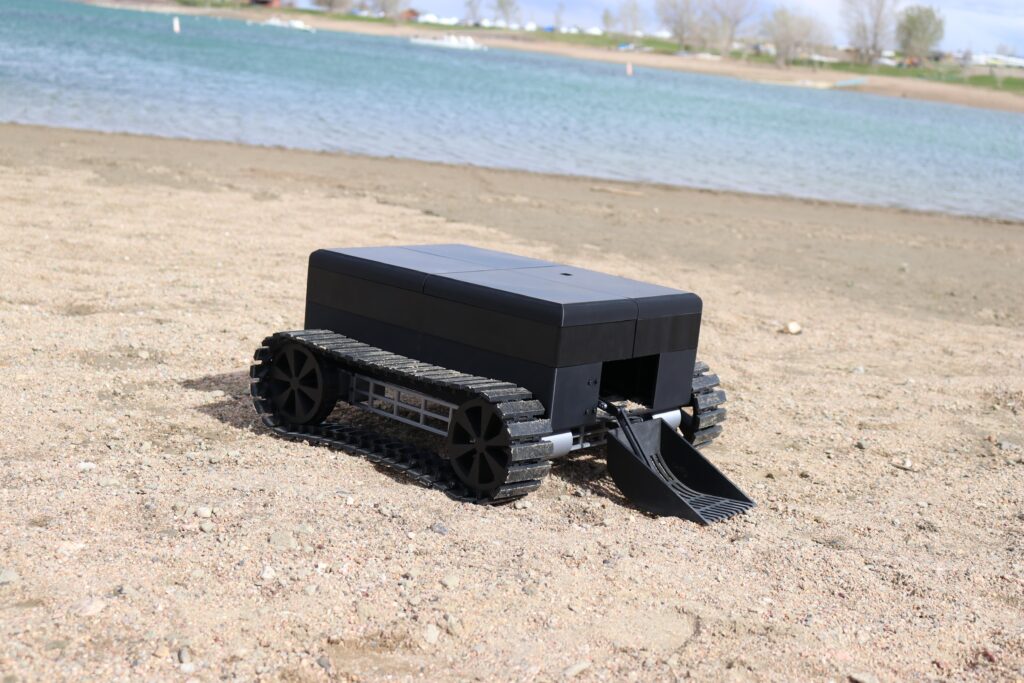
Without anyone caring for them, beaches quickly become trash-covered swaths of disappointment. That care is necessary to maintain the beautiful sandy havens that we all want to enjoy, but it requires a lot of labor. A capstone team of students from the University of Colorado Boulder’s Creative Technology & Design program recognized that fact and they create the Seaside Sweeper beach-cleaning robot to lighten the load.
Seaside Sweeper is like a Roomba for beaches. Either autonomously or through manual control, it can patrol a coastline for up to 15 hours on a battery charge and scoop up any trash it comes across. This costs less than $450 to build, which is an important consideration when most beaches are public property and have limited maintenance budgets.
There are two Arduino boards used in this project: an Arduino Mega 2560 in the Seaside Sweeper itself and an Arduino UNO Rev3 in the remote. They communicate with each other through nRF24L01+ radio transceivers. The Mega 2560 is able to track its own position using a Neo-6M GPS module and an Adafruit LIS3MDL compass module. Together, those enable the autonomous navigation functionality — though it isn’t clear how Seaside Sweeper detects trash. The Mega 2560 also controls the four drive motors and the scoop mechanism’s servo motor.
The robot’s body and almost all of its mechanical parts were 3D-printed to keep costs down. That even includes the tracks. The electronic components can be connected via breadboards, so no custom PCBs are required.
The post Seaside Sweeper keeps beaches pristine appeared first on Arduino Blog.
